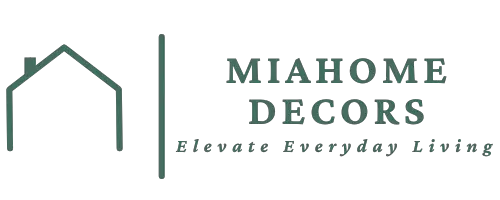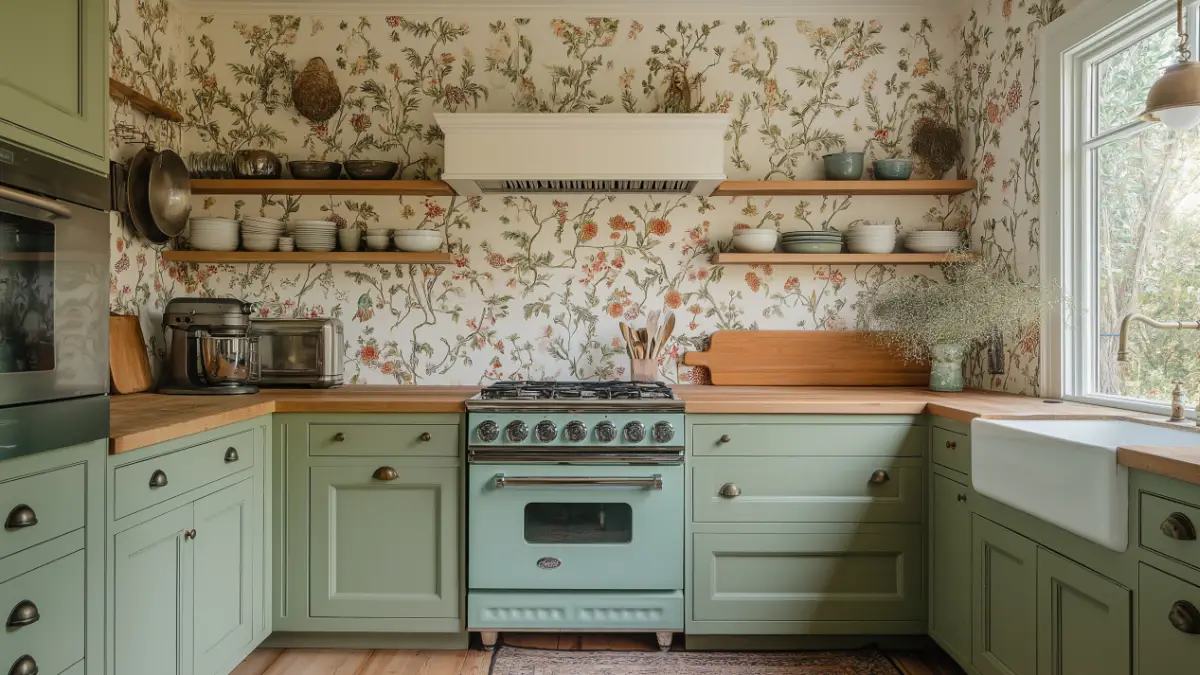Cottagecore Kitchen Aesthetic: Embrace Nature and Simplicity in Your Design
Table of Contents
In an increasingly fast-paced world, more people are turning toward the soothing charm of cottagecore—an aesthetic rooted in simplicity, nature, and nostalgia. At the heart of this trend lies the kitchen, often considered the soul of a home. A cottagecore kitchen blends rustic textures, natural elements, and vintage touches to create a warm, lived-in space that invites slow living and cozy moments.
Whether you’re living in a countryside cottage or a modern apartment, incorporating cottagecore into your kitchen design offers a comforting escape from digital overload and urban life. It’s not about perfection—it’s about presence. From open shelves filled with ceramics to hand-stitched linens and fresh-cut herbs, every detail contributes to the narrative of a quiet, intentional home.
This post explores how to bring the cottagecore aesthetic to life in your kitchen—from color palettes and materials to layout tips and decor details. Get ready to design a kitchen that feels timeless, wholesome, and full of heart.
Defining the Cottagecore Kitchen Aesthetic
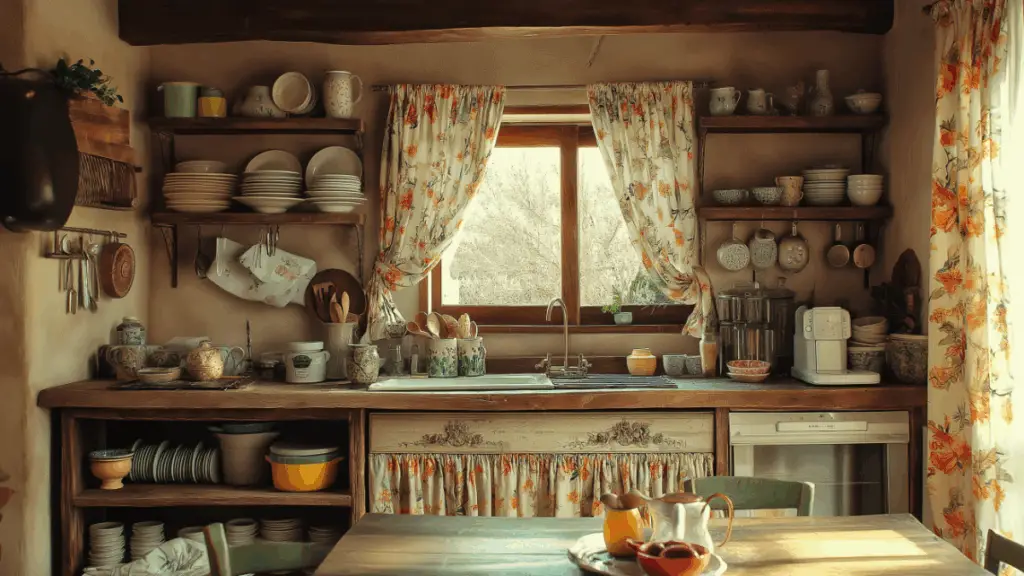
- Romantic, nostalgic style inspired by rural life and natural simplicity.
- Emphasis on handmade, vintage, and well-worn elements.
- Common features: soft pastel tones, wood finishes, floral prints, and lived-in charm.
- Blends utility with visual warmth—form meets function.
- Encourages sustainability through thrifted or handmade pieces.
Table: Key Elements of Cottagecore Style
| Feature | Description |
|---|---|
| Color palette | Soft greens, dusty rose, warm cream |
| Materials | Wood, linen, ceramic, cast iron |
| Decor | Open shelves, dried florals, vintage jars |
Color Palette and Materials: Soft, Earthy, and Natural
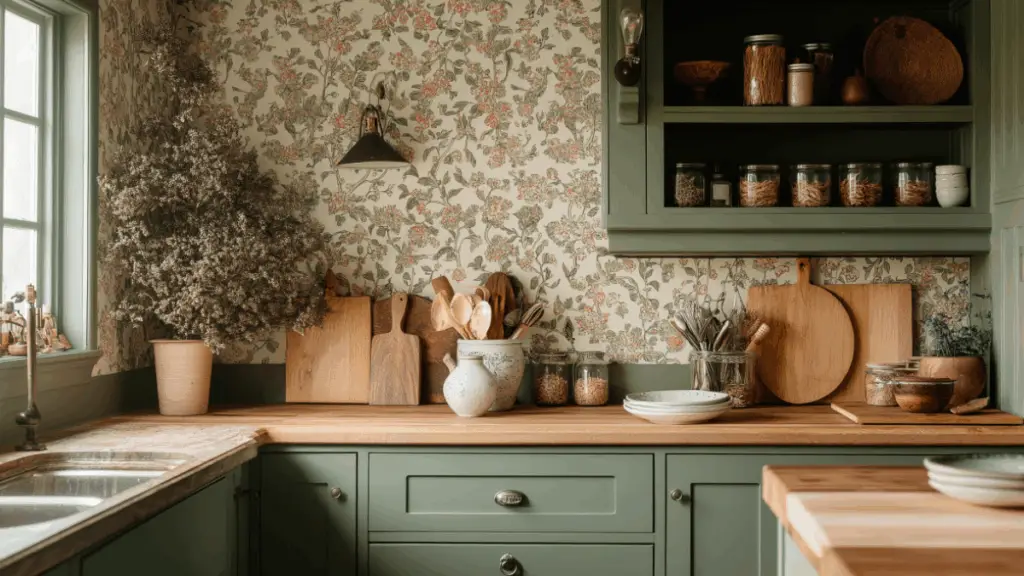
- Choose nature-inspired tones: sage green, warm white, pale yellow.
- Embrace matte or chalky finishes over glossy surfaces.
- Use reclaimed wood for shelving or countertops.
- Linen, cotton, and lace fabrics for tablecloths and curtains.
- Clay, ceramic, and enamel serveware enhance the handmade feel.
Table: Cottagecore Color and Texture Pairings
| Color | Material Pairing | Mood Created |
|---|---|---|
| Sage green | Reclaimed pine wood | Calm and grounding |
| Creamy white | Textured linen | Airy and light |
| Dusty rose | Floral wallpaper or tile | Romantic and vintage |
Open Shelving and Display: Style Meets Practicality
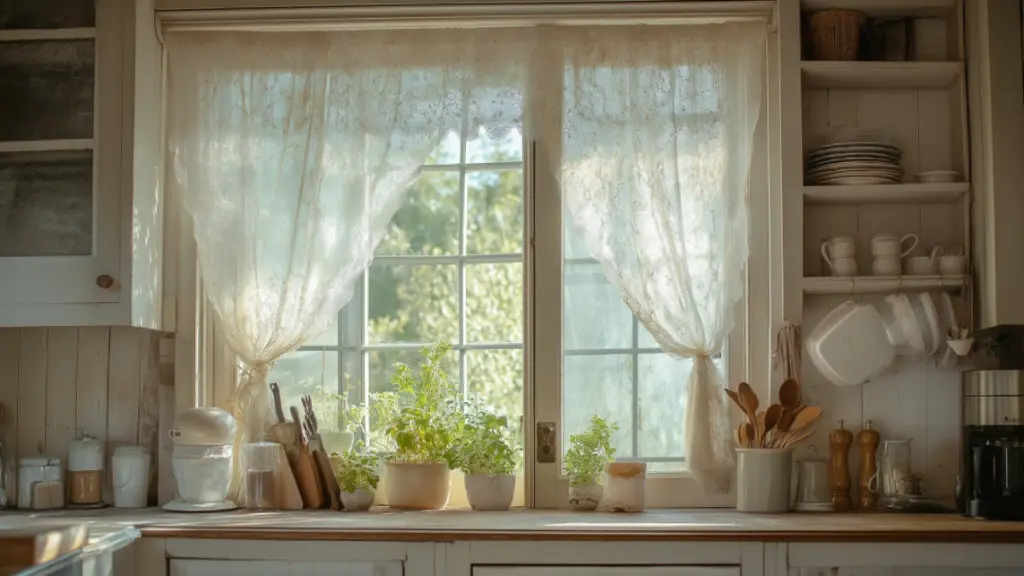
- Replace upper cabinets with floating wooden shelves.
- Display vintage glassware, ceramic mugs, and heirloom dishes.
- Use woven baskets for bread, herbs, or linens.
- Keep everyday tools like wooden spoons or ladles on hooks.
- Layer in visual texture with stacked dishes and cookbooks.
Table: Open Shelf Styling Guide
| Shelf Item | Purpose/Visual Benefit |
|---|---|
| Vintage dishes | Adds color and charm |
| Cookbooks | Personal touch and practicality |
| Fresh herbs | Scent and green accents |
Cottage-Inspired Storage and Layout Ideas
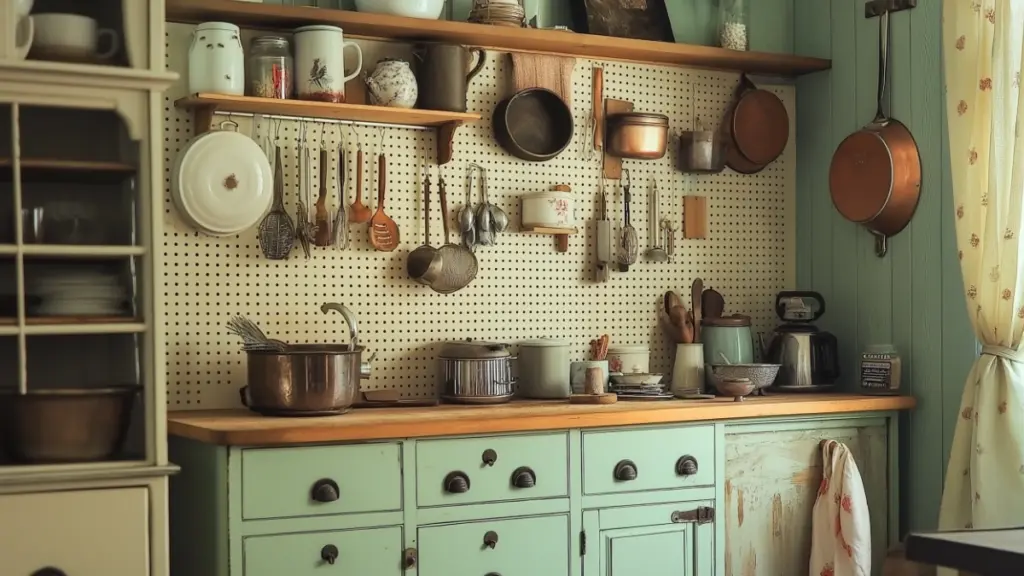
- Incorporate a free-standing hutch or pantry cabinet.
- Use a farmhouse table in place of a kitchen island.
- Maximize space with vertical storage and pegboards.
- Add a skirted sink base with floral or gingham fabric.
- Include wicker or rattan baskets under benches or shelves.
Table: Storage Solutions for a Cottagecore Kitchen
| Feature | Function | Aesthetic Value |
|---|---|---|
| Skirted cabinets | Conceal clutter in charming style | Adds softness and vintage feel |
| Pegboards with hooks | Vertical tool storage | Keeps utensils accessible |
| Hutch with open shelves | Display and storage combo | Focal point in the kitchen |
Natural Light and Cozy Illumination
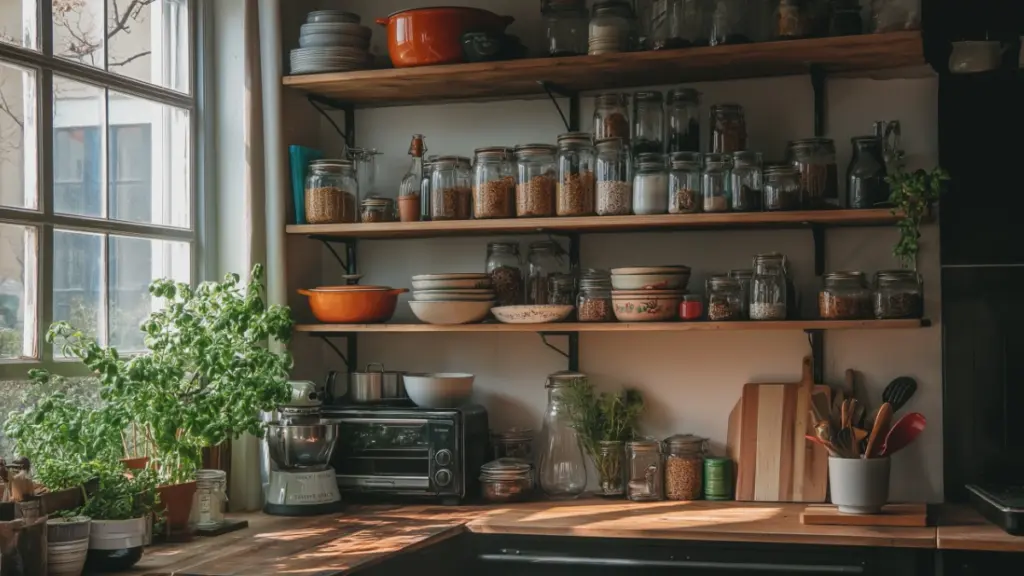
- Use lace or sheer curtains to let light filter softly.
- Incorporate pendant lights with rattan or wicker shades.
- Add table lamps or wall sconces for ambient lighting.
- Use candles or lanterns to set a cozy mood in the evening.
- Natural light enhances soft colors and rustic textures.
Table: Cottagecore Lighting Tips
| Light Source | Where to Use | Benefit |
|---|---|---|
| Pendant over table | Dining nook | Adds visual warmth |
| Table lamp on shelf | Coffee or tea station | Cozy, inviting feel |
| Window with sheer curtains | Sink or prep area | Natural light without glare |
Garden-to-Kitchen Vibes: Herbs, Florals, and Produce Displays
- Grow herbs like rosemary, basil, and thyme in terra cotta pots.
- Use fresh flowers or wildflower bouquets for seasonal color.
- Display produce in vintage bowls or market baskets.
- Hang garlic or dried herbs from open shelving or beams.
- Keep a small potted plant or indoor tree near the window.
Table: Cottagecore Kitchen Garden Ideas
| Plant/Element | Display Method | Aesthetic Contribution |
|---|---|---|
| Potted herbs | Windowsill or wall shelf | Scent + greenery |
| Dried lavender | Hanging from beams | Fragrance + softness |
| Lemons/apples | Bowl on countertop | Fresh color and texture |
Detailed Content Expansion
Color Palette and Materials: Soft, Earthy, and Natural
Cottagecore design begins with color and material selection—these elements set the foundation for a space that feels gentle, organic, and lived-in. The ideal palette is rooted in nature: sage greens, creamy whites, pale peach, dusty rose, and soft gray. These tones are often matte in finish, mimicking chalk-painted furniture or sun-faded walls.
Materials should evoke a handmade or repurposed feel. Reclaimed wood is excellent for open shelving or countertops, offering warmth and character. For fabrics, choose linen, cotton, and lace. They breathe well, age beautifully, and layer with cozy charm.
Incorporate ceramics and enamelware for both functionality and visual appeal. Vintage-inspired tile, such as checkerboard floors in cream and dusty green, also fits beautifully within the aesthetic. The key is to create softness and depth without relying on sleek or synthetic finishes.
| Color/Material Combo | Effect Created |
|---|---|
| Sage green + natural wood | Earthy and calming |
| Cream linen + floral tile | Light and vintage-inspired |
| Enamel cookware + open shelves | Functional and decorative |
These choices encourage a slower pace—one where beauty is found in texture, imperfection, and natural rhythm.
Open Shelving and Display: Style Meets Practicality
Open shelving isn’t just a cottagecore staple—it’s a functional way to blend decor with everyday tools. Instead of hiding kitchen items behind uniform cabinet doors, embrace the art of display. Wooden floating shelves or brackets with scalloped edges instantly evoke rustic charm.
On these shelves, stack ceramic dishes, mason jars filled with grains, and small potted herbs. Add a few cookbooks with worn spines, and you’ve created a still life that’s both useful and beautiful. Use baskets for texture and storage, and let everyday items—like a teapot or butter dish—be part of the scene.
Hooks mounted beneath the shelves can hold tea towels or dried herb bundles. A key styling tip is layering: stagger heights, mix materials, and let things look slightly imperfect. It’s not meant to be minimalist—it’s meant to feel lived-in and loved.
| Shelf Styling Tip | Visual or Functional Benefit |
|---|---|
| Group items by color | Creates cohesion and visual flow |
| Mix heights and textures | Adds depth and rustic elegance |
| Include greenery | Adds softness and freshness |
Open shelves remind us that daily rituals—cooking, baking, gathering—deserve to be celebrated in style.
Conclusion
The cottagecore kitchen is more than just a design trend—it’s a way of life. Rooted in simplicity, nature, and authenticity, this aesthetic invites you to slow down, savor your surroundings, and create beauty in the everyday. Whether it’s through vintage finds, potted herbs, or the gentle creak of reclaimed wood floors, cottagecore allows you to turn your kitchen into a soulful sanctuary—where warmth and intention meet.
